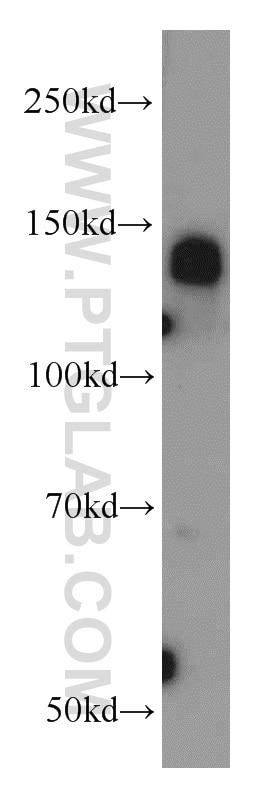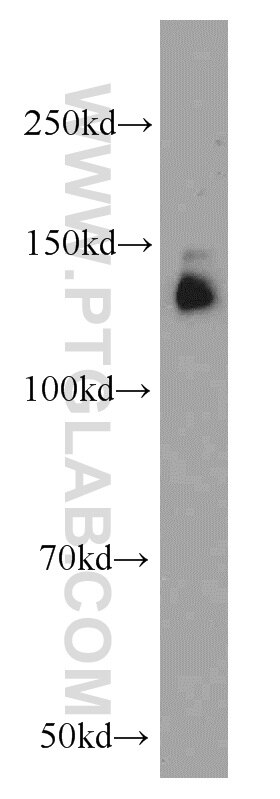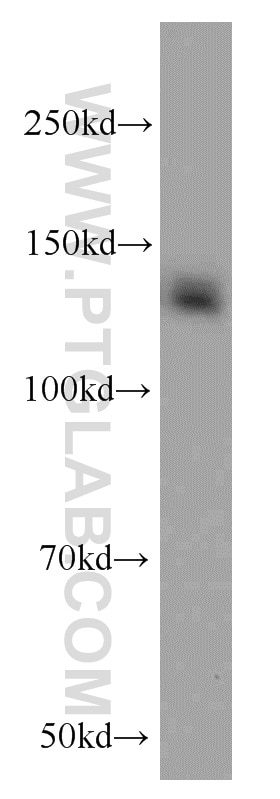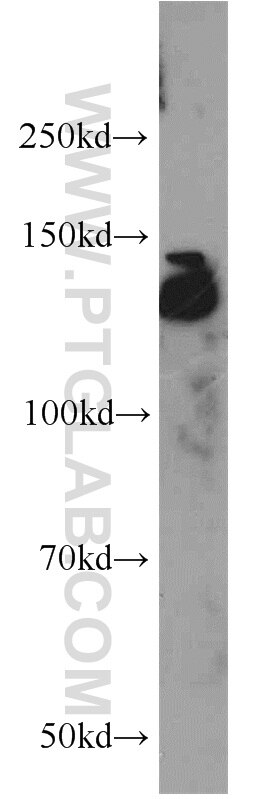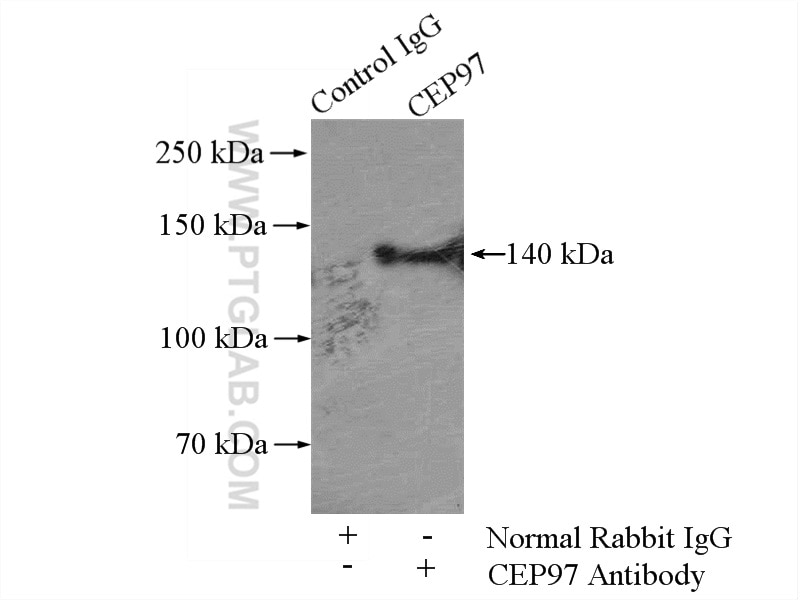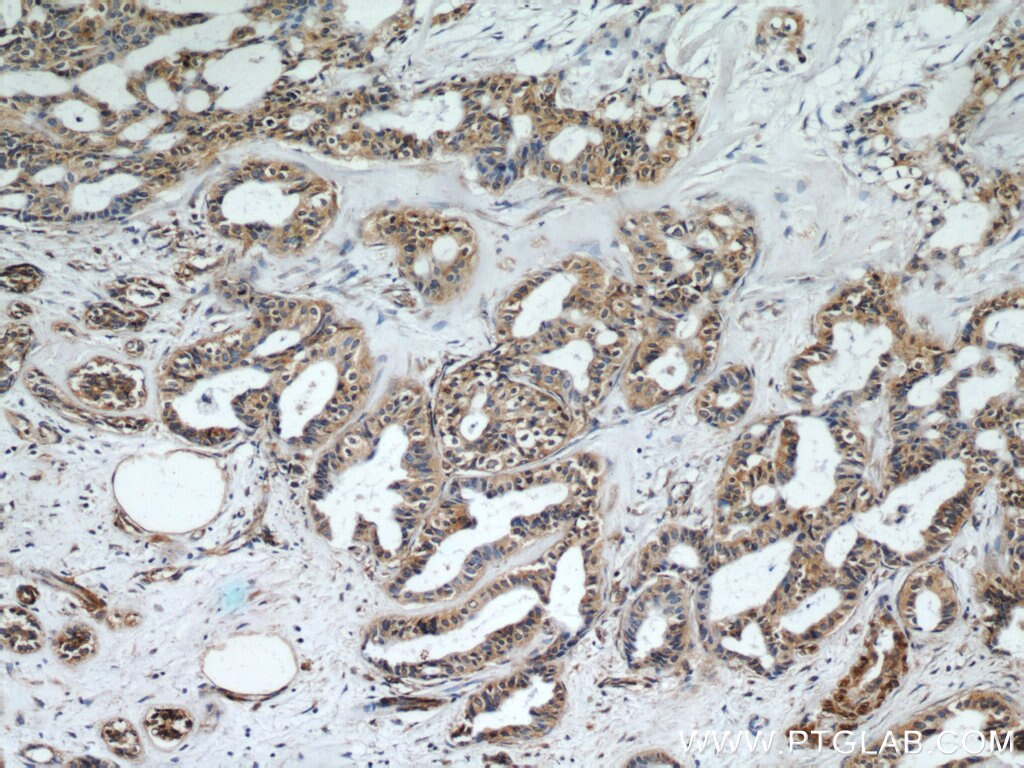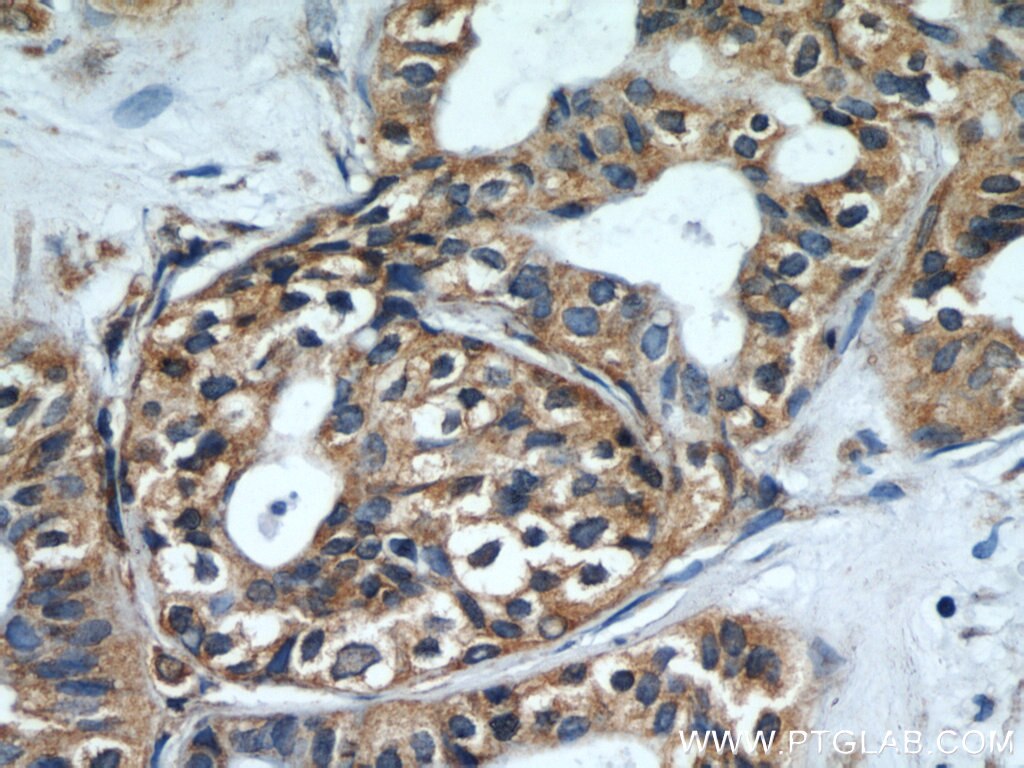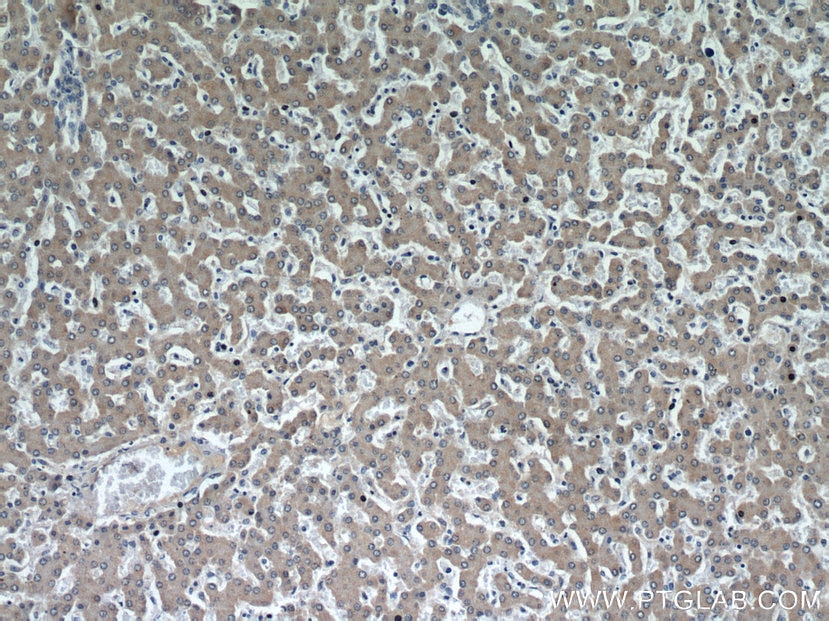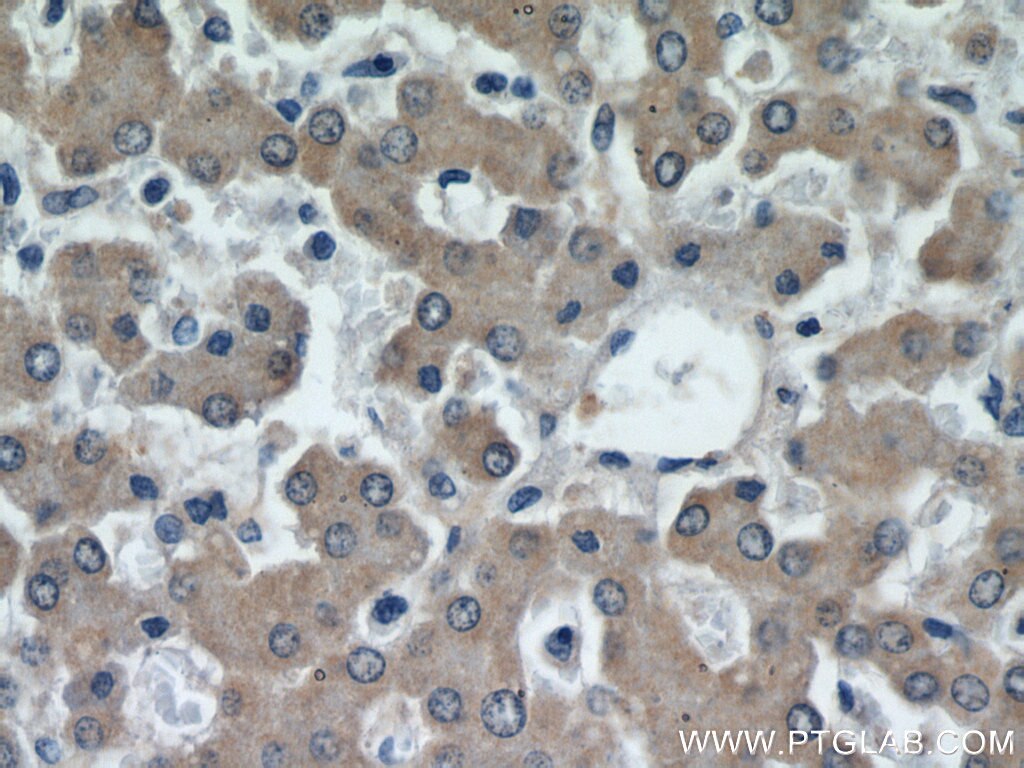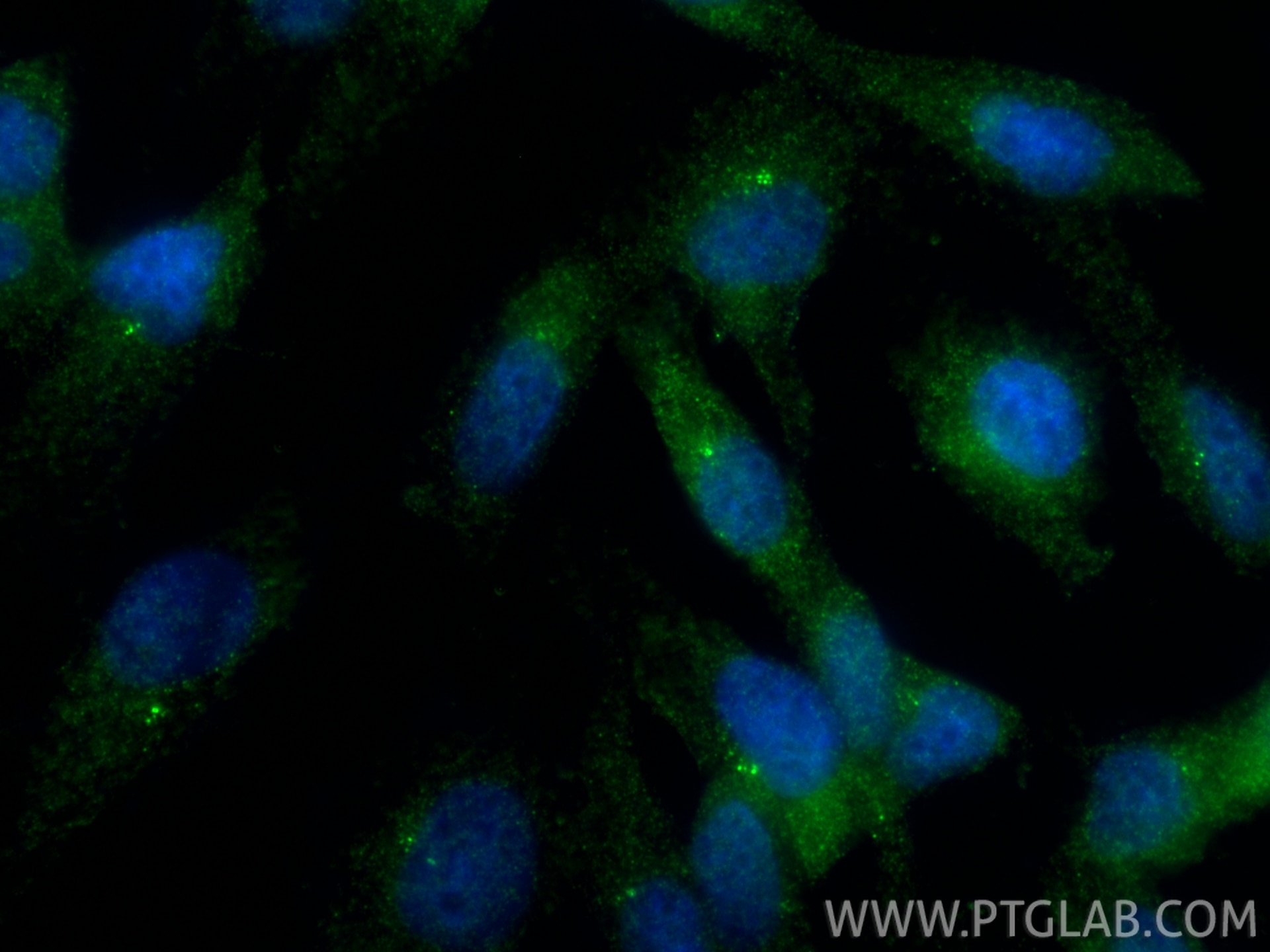Tested Applications
| Positive WB detected in | HL-60 cells, HEK-293 cells, HeLa cells, PC-3 cells |
| Positive IP detected in | HeLa cells |
| Positive IHC detected in | human breast cancer tissue, human liver tissue Note: suggested antigen retrieval with TE buffer pH 9.0; (*) Alternatively, antigen retrieval may be performed with citrate buffer pH 6.0 |
| Positive IF/ICC detected in | MDCK cells |
Recommended dilution
| Application | Dilution |
|---|---|
| Western Blot (WB) | WB : 1:500-1:2000 |
| Immunoprecipitation (IP) | IP : 0.5-4.0 ug for 1.0-3.0 mg of total protein lysate |
| Immunohistochemistry (IHC) | IHC : 1:20-1:200 |
| Immunofluorescence (IF)/ICC | IF/ICC : 1:500-1:2000 |
| It is recommended that this reagent should be titrated in each testing system to obtain optimal results. | |
| Sample-dependent, Check data in validation data gallery. | |
Published Applications
| WB | See 12 publications below |
| IF | See 17 publications below |
| IP | See 2 publications below |
Product Information
22050-1-AP targets CEP97 in WB, IHC, IF/ICC, IP, ELISA applications and shows reactivity with human, canine samples.
| Tested Reactivity | human, canine |
| Cited Reactivity | human, mouse, drosophila |
| Host / Isotype | Rabbit / IgG |
| Class | Polyclonal |
| Type | Antibody |
| Immunogen |
CatNo: Ag16995 Product name: Recombinant human CEP97 protein Source: e coli.-derived, PGEX-4T Tag: GST Domain: 506-865 aa of BC041085 Sequence: ESTEQKQSDIKKPENTQPENKETISQATSEKLPMILTQRSVALGQDKVALQKLNDAATKLQACWRGFYARNYNPQAKDVRYEIRLRRMQEHIVCLTDEIRRLRKERDEERIKKFVQEEAFRFLWNQVRSLQVWQQTVDQRLSSWHTDVPPISSTLVPSKHPLFTQSQESSCDQNADWFIASDVAPQEKSLPEFPDSGFHSSLTEQVHSLQHSLDFEKSSTEGSESSIMGNSIDTVRYGKESDLGDVSEEHGEWNKESSNNEQDNSLLEQYLTSVQQLEDADERTNFDTETRDSKLHIACFPVQLDTLSDGASVDESHGISPPLQGEISQTQENSKLNAEVQGQQPECDSTFQLLHVGVTV Predict reactive species |
| Full Name | centrosomal protein 97kDa |
| Calculated Molecular Weight | 865 aa, 97 kDa |
| Observed Molecular Weight | 130-140 kDa |
| GenBank Accession Number | BC041085 |
| Gene Symbol | CEP97 |
| Gene ID (NCBI) | 79598 |
| RRID | AB_11182378 |
| Conjugate | Unconjugated |
| Form | Liquid |
| Purification Method | Antigen affinity purification |
| UNIPROT ID | Q8IW35 |
| Storage Buffer | PBS with 0.02% sodium azide and 50% glycerol, pH 7.3. |
| Storage Conditions | Store at -20°C. Stable for one year after shipment. Aliquoting is unnecessary for -20oC storage. 20ul sizes contain 0.1% BSA. |
Background Information
CEP97, also named as LRRIQ2, contains one IQ domain, eight LRR (leucine-rich) repeats and one LRRCT domain. It collaborates with CEP110, being involved in the suppression of a cilia assembly program. CEP97 is required for correct spindle formation and has a role in cytokinesis. It is required for recruitment of CEP110 to the centrosome. This protein has a calculated MW ~97 kDa, although the protein migrates at a molecular weight of approximate 140 kDa. The protein is highly acidic, with a pI ~4.7, providing a potential explanation for its reduced mobility in SDS-PAGE. [PMID: 17719545]. This is a rabbit polyclonal antibody raised against the C terminus of human CEP97.
Protocols
| Product Specific Protocols | |
|---|---|
| IF protocol for CEP97 antibody 22050-1-AP | Download protocol |
| IHC protocol for CEP97 antibody 22050-1-AP | Download protocol |
| IP protocol for CEP97 antibody 22050-1-AP | Download protocol |
| WB protocol for CEP97 antibody 22050-1-AP | Download protocol |
| Standard Protocols | |
|---|---|
| Click here to view our Standard Protocols |
Publications
| Species | Application | Title |
|---|---|---|
Cell Res NudCL2 is an autophagy receptor that mediates selective autophagic degradation of CP110 at mother centrioles to promote ciliogenesis. | ||
Nat Commun M-Phase Phosphoprotein 9 regulates ciliogenesis by modulating CP110-CEP97 complex localization at the mother centriole. | ||
Curr Biol Cep97 Is Required for Centriole Structural Integrity and Cilia Formation in Drosophila. | ||
Curr Biol Mother Centriole Distal Appendages Mediate Centrosome Docking at the Immunological Synapse and Reveal Mechanistic Parallels with Ciliogenesis. | ||

